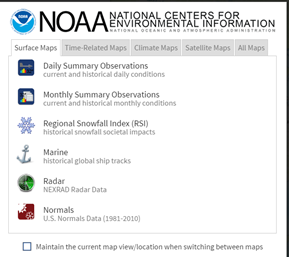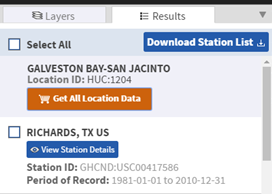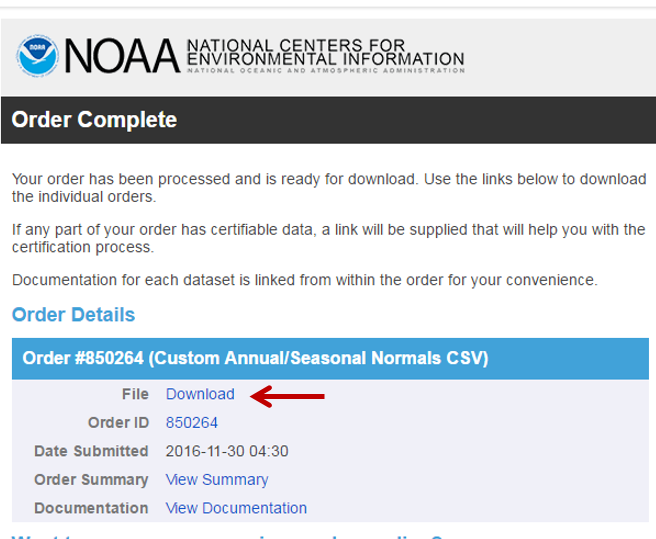...
Create an 8.5 x 11 layout showing the DEM clipped to the subbasin with areas less than or equal to 15 feet in elevation highlighted.
Symbolizing raster files
Now you will create a new map document from the one you are currently using.
- Click the Insert menu and select New Map…Map.
- Double-click “Map1” in the contents pane and type “Lab2Topo” as name. Click Save.
- Expand Databases in the Catalog pane. Click HydrologyLab.gdb.
- Drag the DEMft and Watersheds_Stateplane layers into the map display.
- Turn off the Watersheds_Stateplane layer.
- Right-click DEMft layer and click the Symbology.
- Scroll down the ‘Color Ramp’ drop-down menu and select the rainbow ramp.
...
- For ‘Z factor’, leave the default value of 1.
- Ensure your ‘Contour’ window appears as shown below and click Run.
- Turn off the DEMft layer to better see the contours.
...
- Right-click the Contours10ft layer. Click Symbology.
...
- Use the drop-down menu at the top to select Unique values.
...
- Use the ‘Value Field’ drop-down menu to select the Contour field.
...
- Use the ‘Color Ramp’ drop-down menu. Check Show All and select one of the few graduated color ramps as shown below.
...
- Now you can tell which contours are highest and lowest.
...
- Turn off and collapse the Contours10ft layer.
...
- Turn back on the DEMft layer.
Generating a hillshade
Now you will create a hillshade raster, which provides a shaded relief of the terrain based on a certain sun angle. It stores a value between 0 and 255 indicating the extent to which the cell would be shaded from the sun.
...
As previously mentioned, the Z factor is used when the horizontal units of the projection and units of the elevation measurements stored in the raster cells are not the same. In this case, both are measured in feet, so a value of 1 is technically correct. Typically, hillshades are used to create realistic three-dimensional representations of mountains, which can be much easier for an audience to interpret than a flat DEM or contour lines. Unfortunately, the opposite is true in Houston, because the area is so flat. It would be difficult to see any changes in elevation using a hillshade, since few shadows would be cast by the terrain. To compensate visually for the flat terrain, you will exaggerate the vertical elevations.
- For ‘Z factor’, type “20” “20”.
- Ensure your ‘Hillshade’ window appears as shown and click Run.
Typically hillshades are shown beneath transparent layers conveying other information, just to give the map a realistic appearance.
- In the Contents pane, drag the Hillshade layer beneath the DEMft layer.
- In the DEMft layer, in the feature-dependent Appearance tab, in the Effects group, slide the transparency to 60%.
...
- Turn on the Watersheds_StatePlane layer.
...
- Symbolize the Watersheds_StatePlane layer with a hollow fill and thick black outline.
As a final touch, you will add the flowlines you downloaded in Lab1 to your Map Display.11.
- Click the Catalog tab.
...
- In the HydrologyLab geodatabase, drag the Flowlines feature class into the Map Display.
...
- In the Contents pane, drag the Flowlines layer above the DEMft layer, but beneath the Watersheds_StatePlane layer.
...
- Symbolize the Flowlines layer with a thin blue line.
...
- Save your map document.
...
FOR MAP LAYOUT TO BE TURNED IN
Create an 8.5 x 11 layout showing transparent elevation in graduated colors on top of a hillshade, with watershed boundaries and flowlines visible.
...
Calculating zonal statistics
...
- Open Geoprocessing pane by clicking Tools from Analysis tab.
- In the Spatial Analyst Tools toolbox, double-click the Zonal toolset then click Zonal Statistics as Table tool.
- For ‘Input raster or feature zone data’, use the drop-down menu to select the Watersheds_StatePlane layer.
- Use the ‘Zone field’ drop-down menu to select the ‘HU_10_NAME’ field.
- For ‘Input value raster, select the DEMft layer.
- For ‘Output table’, rename the table from “ZonalSt_Watersh1” to “WatershedElevation”.
- Ensure your ‘Zonal Statistics as Table’ window appears as shown and click Run.
- In the Contents pane, right-click the WatershedElevation table and select Open.
...
- In the Geoprocessing pane, search for ‘Table to Excel’.
...
- For the Input Table, select ‘WatershedElevation’ from the drop-down menu.
...
- For ‘Output Excel File’, click the Browse button.
If you save this table inside your file geodatabase, you will not be able to open it outside of ArcGIS, so you will instead save it as a text file outside of your file geodatabase.12.
- Save the table within the HydrologyLab folder.
...
- For ‘Name’, name as “WatershedElevation”.
...
- In the ‘Table to Excel’ window, click Run.
...
- Close the Table.
Now you will open the exported text file in Excel.
...
- Click the File menu and select Save As.
- Navigate to your HydrologyLab folder.
- For ‘File name:’, type “WatershedElevation”.
- Use the ‘Save as type:’ drop-down menu to select Excel Workbook (*.xlsx).
- Click Save and close Excel.
FOR TABLE TO BE TURNED IN
Create a table highlighting the minimum and maximum values for the minimum, maximum, range, mean, and standard deviation of all elevation values within each watershed.
Part 3: Downloading rainfall data
Downloading data from Climate Data Online.
...
- In a web browser, go towww.ncdc.noaa.gov/cdo-web/.
- Click the Mapping Tool tab.
You will search for data using the NHD hydrologic units. Previously, you had been working with the Buffalo-San Jacinto subbasin (HUC = 12040104). In this case, you will step up two levels to the Galveston Bay-San Jacinto subregion (HUC = 1204).
- On the Surface Maps tab, click Normals
- In the left sidebar, on the Layers tab, uncheck Daily Climate Normals, and check Annual Climate Normals.
- To the right of Annual Climate Normals, click the Map Tools button.
- In the new ‘ANNUAL CLIMATE NORMALS TOOLS’ window, click Location.
- Use the drop-down menu to select USGS HUC.
- Use the ‘Select a HUC type’ drop-down menu to select Subregions (4-digit).
- Use the ‘Select a HUC’ drop-down menu to select Galveston Bay-San Jacinto.
- Click Zoom Zoom to location.
- The left sidebar switches to the Results tab. Click Get Get All Location Data.
- For Step 1, select CSV for the output format and click CONTINUE.
- For ‘Station Detail & Data Flag Options’, check Station name, Geographic location, and Include data flags to include those variables the data table.
- For ‘Select data types for custom output’, click the Annual Precipitation category to expand it.
- Check Long-term averages of annual precipitation totals (ANN-PRCP-NORMAL).
- At the bottom of the window, click CONTINUE.
- Type your email address twice and click SUBMIT ORDER.
Check your email. You should receive two emails a couple minutes apart, although it may take a few hours to receive the second email. The first one indicates that your data request was submitted and the second one includes the requested data.
- In your email, click the Download link to download the requested CSV file.
...
- Rename “ANN-PRCP-NORMAL” to “ANNPRCPHI”, for annual precipitation in hundredths of inches.
- Along the top of the worksheet, drag across the column letters to select columns A through H.
- Copy the columns. Along the bottom of the worksheet, click the "plus" icon to create a new sheet. In the A1 cell, paste your previously copied columns.
- Delete the previous sheet.
- Along the top of the worksheet, drag across the column letters to select columns A through H.
- Hover your mouse between columns G and H until the cursor changes to two outward facing arrows and double-click to auto-size the column widths.
- At the bottom left of the worksheet, rename the worksheet “PrecipStations”.
- Click the File menu and select Save As.
...
- Navigate to your Lab 1 folder.
...
- For ‘File name:’, type PrecipStations.
...
- Use the ‘Save as type:’ drop-down menu to select Excel 97-2003 Workbook.
...
- Click Save.
...
- Close Excel.
Displaying XY data
Now you are ready to start a new map document and display the tabular rain gage data you just downloaded.
- Return to ArcGIS Pro.
- Click the Insert menu and select New Map….
- Click “Map1” in the contents pane to rename it as “Lab2Precip”. Click Save.
- Drag Watersheds_Stateplane onto the map display.
- Click the Geoprocessing tab and search for ‘Excel to Table’.
- For the Input Excel File, selectPrecipStations. Rename the output table PrecipStations.
- Click Run.
- In the Contents pane, right-click the PrecipStations table and select Display XY Data.
- For ‘X Field:’, select the LONGITUDE field.
- For ‘Y Field:’, select the LATITUDE field.
- Click the Atlas to the right of the Spatial Reference box.
Because the coordinates are in the form of latitude and longitude in decimal degrees, you know you will need to select a geographic coordinate system, rather than a projected coordinate system. While the data could theoretically be in any geographic coordinate system, you will select the North American Datum 1983, commonly abbreviated NAD 83, because this is coordinate system of the data provided on the NCDC website.
- Double-click Geographic Coordinate Systems > North America > USA and Territories.
- Select NAD 1983 and click OK.
- Ensure that your window matches that below and click Run.
The points should now appear on top of the watersheds, though they also extend beyond the watersheds in the Buffalo-San Jacinto subbasin, since we downloaded them for the entire Galveston Bay-San Jacinto subregion.
Exporting XY data
Since the points appear to be in reasonable locations (rather than in another country or the middle of the ocean), you will want to export them to a new feature class in your ElevationRainfall geodatabase. Exporting to a feature class will allow you to reuse this points layer in other future map documents without having to go through the display XY data process each time.
- Right-click the PrecipStations_Layer layer and select Data > Export Features.
Because you last exported a text file outside of your geodatabase, notice the output feature class is now set to a shapefile in your Lab 2 folder, rather than a feature class within your ElevationRainfall geodatabase.
- Next to ‘Output feature class’, click the Browse button.
- Navigate to the HydrologyLab geodatabase.
- Double-click your HydrologyLab geodatabase to save your feature class in it.
- For ‘Name:’, type “PrecipStations_Features” and click Save Save.
- Click Run.
Since you are now using a permanent feature class, you may remove your temporary Events layer and the corresponding Excel table. - Right-click the PrecipStations_Layer layer and select Remove Remove.
- Right-click the PrecipStations PrecipStations table and select Remove Remove.
Projecting vector data
Repeating the technique you learned earlier in this lab to project vector data, project the PrecipStations layer into the State Plane Texas South Central projection.Save the resulting feature class and name it “PrecipStations_StatePlane”. Remove the original PrecipStations layer from the Contents pane.
...
- In the Contents pane, Ctrl-select the PrecipStations_StatePlane and Watersheds_StatePlane layers.
- Right-click either selected layer and select Zoom To Layers.
- Open Geoprocessing pane by clicking Tools from Analysis tab.
- Double-click the Analysis toolbox then the Proximity toolset then the Create Thiessen Polygons tool.
Before populating the variables in this tool, you will change an Environment setting so that the polygons are calculated for the entire region that you just zoomed to.
- At the top of the Geoprocessing window, click the Environments button on the right.
- For Extent, use the drop-down menu to select Current Display Extent and go back to Parameters.
- For ‘Input Features’, drag in the PrecipStations_StatePlane layer.
- For ‘Output Feature Class’, rename the feature class from “PrecipStations_StatePlane_Cr” to “PrecipThiessen”.
- Use the ‘Output Fields’ drop-down menu to select All fields.
- Ensure your ‘Create Thiessen Polygons’ window appears as shown below and click Run.
You will notice that polygons now fill the entire Map Display indicating which areas are closest to which rain gages. - Open the PrecipThiessen layer attribute table.
Notice that all of the fields that you originally downloaded from CDO are still included, because you selected to output all fields when running the Create Thiessen Polygons tool. If you do not see all of the same fields, re-run the tool and this time output all fields. - Close the Table.
...














